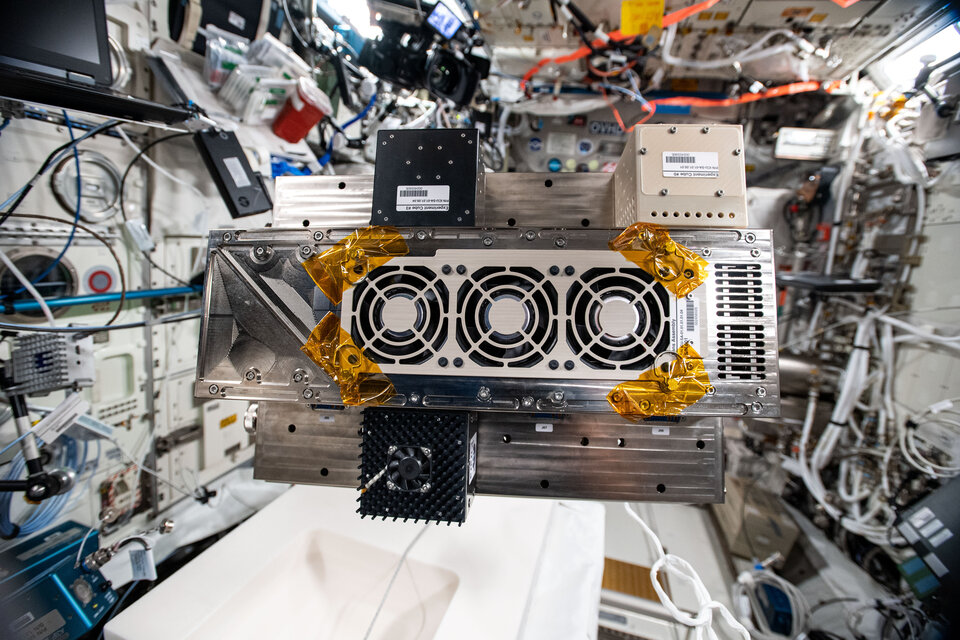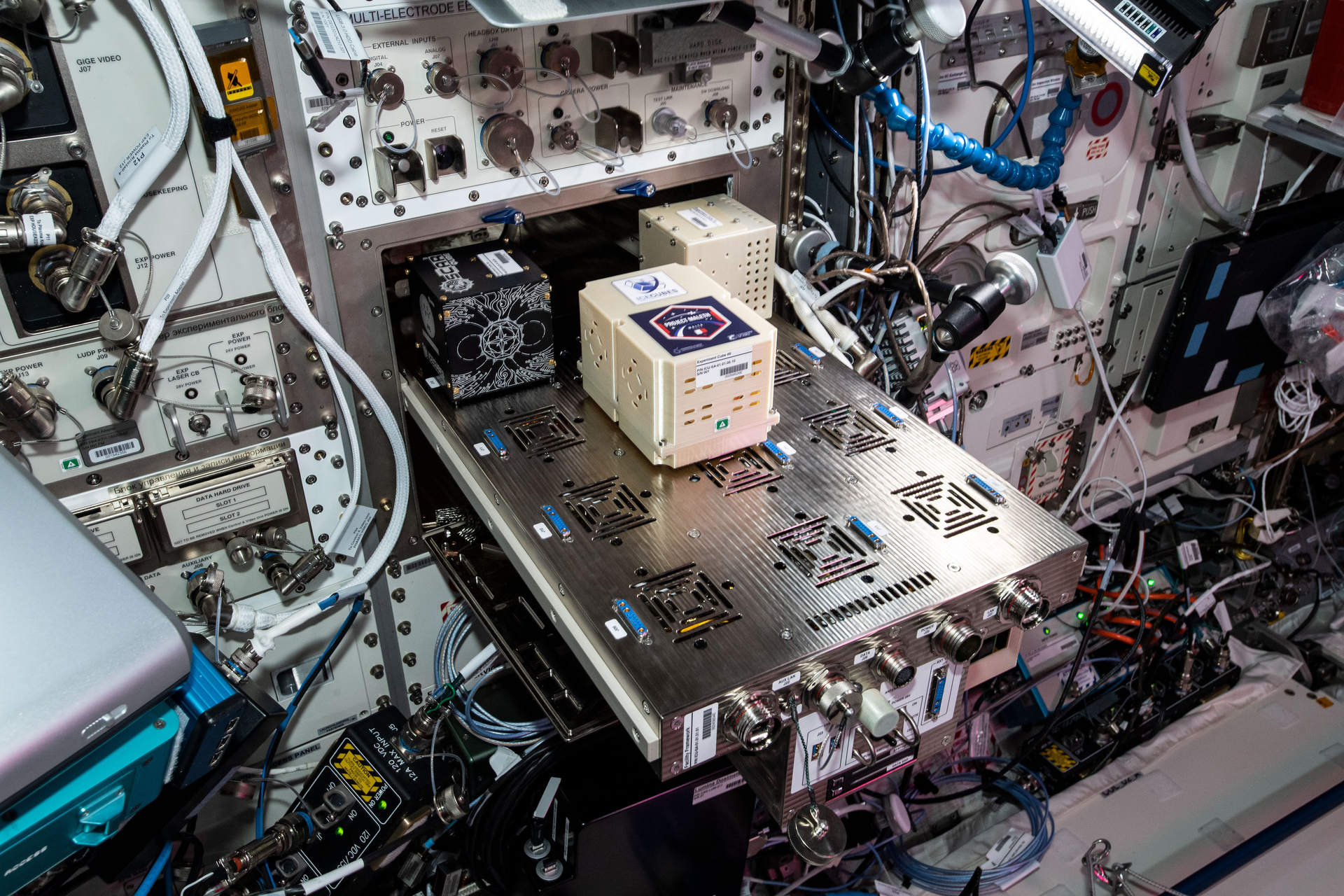International Space Station
In brief
The ESA Academy Experiments programme gives master and PhD candidates the opportunity to fly a scientific experiment in microgravity conditions onboard the International Space Station (ISS). Successful applicants are given the opportunity to design, build and operate a fully autonomous experiment that will stay onboard the ISS for a period lasting up to 4 months in the ICECubes facility.
In-depth
What is the ICECubes Facility?
Enjoy the video below to discover all the platforms! For the International Space Station chapter go to minute 18:08.
The ICECubes Facility is an experiment platform that offers flexibility to host many different experiments. During flight, users can have near real-time telemetry (compatible with limitations imposed by ISS telecommunications) and telecommanding capabilities with the Experiment Cube from any location with an internet connection.

ICE Cubes Facility is particularly suited for testing and validating any technologies or components in a relevant space environment and raising their Technology Readiness Level (TRL) by in-orbit demonstration. In terms of scientific research, Fluid Science, Foams, Colloidal chemistry, Nanoparticles, Proteins Crystallization, Materials, Radiation, Radiation Biology, Space biology, Microbiology, Cell biology, Plants biology, Stem cell research, Regenerative medicine, 3D Tissue engineering, Cancer research, etc. are all possible on this platform.
The ESA Academy Experiments programme provides students teams with the unique opportunity to place an experiment of their own design, on-board the ISS, where the experiment can operate within the high-quality, long duration microgravity environment aboard the Columbus laboratory. The ICECubes Facility developed and operated by Space Applications Services accepts experiments of standard formats (multiples of 1U = 10 x 10 x 10 cm) and provides power, communication and thermal regulation enabling teams of students to focus the majority of their efforts on their experiment payload. Controlling the experiment whilst on the ISS can be done from the home institute and data can be downloaded near real time also.
Teams selected to participate in the programme are guided and supported by ESA, Space Applications Services experts and members of the European Low Gravity Research Association (ELGRA) as they navigate through all stages of the project, from the initial stages of design through to the operation and data collection phases of their experiment.
Programme and technical constraints
While defining their projects, applicants should keep in mind the following constraints that apply to the experiments (amongst others):
- The size of the experiment cube is limited to a specific 10 x 10 x 10 cm format
- Astronaut interaction is limited to installation and retrieval
- Safety precautions are extremely stringent
- Hardware must go through vibration, vacuum, EMC and audible noise tests
- The development phases are likely to extend beyond 1 academic year
- Return of the experiment Cube from the station only feasible for scientifically valid reasons
- Time on ISS limited to max 4 months
- The amount of documentation and reviews necessary for each phase of the programme is significant
Platform specific documentation
More detailed information about ICECubes Facility and Space Applications Services can be found here.
All information information on the requirements and engineering conditions can be found here.
IMPORTANT
Teams interested in making use of the ICECubes Facility should in addition to the proposal template and privacy notice, submit the following documents filled in:


